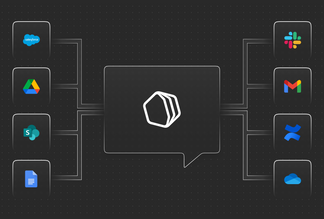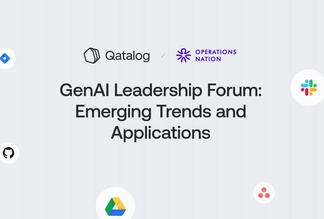
More posts
Share this article:
How to become async first
There are lots of advantages to an asynchronous working culture, which allows people to work when they’re most productive and improves wellbeing. However, it’s still a relatively new way of working, and as our latest report in partnership with GitLab revealed, it’s not always straightforward to make the change.
The research found that the two main barriers center around the culture of an organization and the use of technology. To help organizations overcome these barriers, Qatalog and GitLab put together a guide with practical tips to go async-first.
Download the guide here - or check out the 12 recommendations below.
How to build an asynchronous culture:
- Communicate proactively
The first step in the process is to talk to your employees and explain why you’re making a transition to a new way of working. Tell them about the benefits you expect to see, both in terms of business performance and staff wellbeing. Alongside this, you should also communicate the types of work that should be done asynchronously vs. synchronously, while giving each team some flexibility to set their own guidelines. - Focus on output
Asynchronous working is about moving away from measuring time spent working, to measuring output and value creation. To align this with your culture, set clear objectives and deadlines, and let people manage their own time to achieve them. This allows everyone to focus on getting their work done, rather than presenteeism. It’s critical this is reflected in reward and recognition schemes. - Model the behaviors
No matter what it says in the guidelines, employees will always take cues from their managers when deciding how they should work and what is expected of them. To affect change, leadership and line managers need to lead by example and model the behavior they want to see. This might not be easy if you are used to working in a certain way, so discuss it together and try to identify potential barriers, so that these can be tackled collectively. - Set expectations early
Talent acquisition is time intensive for all involved, so you want to get it right the first time. To reduce the chance of bad hires, clearly outline the way you work as a company in your job descriptions and discuss it during the hiring process to ensure new joiners know what to expect and are comfortable working in this way.
- Hold people accountable
Culture doesn’t work if it’s just words on the page and there will inevitably be some people who either don’t want to change the way they work, or find it difficult. In these scenarios, as hard as the conversation might be, you need to hold people accountable to your company values and agreed ways of working, from new hires up to the C-suite. - Be deliberate
In many organizations, meetings are the default mode of communication when decisions need to be made or a progress update is required. For async to work, synchronous communication should be used sparingly and deliberately for specific use cases. This might be for consolidating work that’s already been done, or for social activities.
How to get asynchronous technology right:
- Create guidelines
To avoid digital presenteeism, you need to set clear guidelines. These should include expectations for the different technology and tooling you use (e.g. response times) and specify whether each one should be used asynchronously or not, and in what situations. This helps to avoid situations - Minimize distractions
There are plenty of tools out there, but not all are right for async. Where possible, choose tools that genuinely support asynchronous work and aim to minimize unnecessary distractions and interruptions. - Take ownership
The default settings for most productive software are designed to keep users constantly engaged, to the detriment of their productivity. Encourage and empower employees to take more ownership of their tech and empower them to disable or modify notifications. To help speed up this process, make sure line managers ask their team if and how they have done this, to ensure they feel comfortable making the changes. - Documentation is key
Documenting everything is key to building async workplaces that are scalable and don’t collapse under pressure. Ensure employees know how to properly document their work and decision-making, so that knowledge and context aren’t lost. Templates and examples of documentation done well can help people understand what they should be aiming for. - Make information accessible
Utilize tools that make information and processes visible and accessible (asynchronously) to as many people as possible. The aim should be to minimize or even eliminate the need to ping someone to find a document or get status updates. This becomes even more important for distributed teams across multiple time zones, as otherwise work can quickly become blocked. - Optimize offices
Many organizations use a hybrid model, which can make async harder. For those with office space, ensure you create an environment that provides space for focused work, not just open floor plans, which can often be distracting.

WRITTEN BY
Sam
Ferris
Contributor
Sam was previously the Qatalog Comms Lead and is now a Communications Consultant, working on behalf of other prominent technology companies.
See their articles


